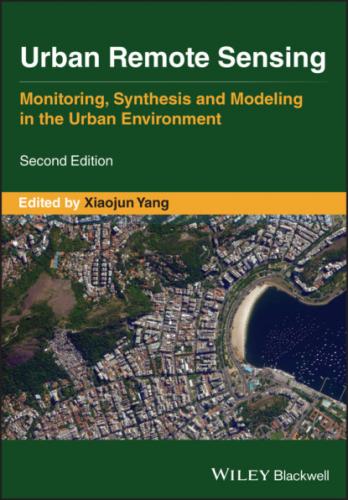1.3.2 ALGORITHMS AND TECHNIQUES FOR URBAN ATTRIBUTE EXTRACTION
With four major chapters, this part (Part III) discusses several emerging remote sensing and machine learning techniques, such as deep learning and cloud computing infrastructures, for urban attribute extraction. It begins with Chapter 8 discussing deep learning models for urban and landscape mapping from remotely sensed data with the specific attention on deep neural networks such as convolution neural networks (CNNs) and recurrent neural networks (RNNs) in addressing current land classification challenges. Two case studies using CNNs and RNNs for landscape mapping over a complex urbanized coastal area are further presented to demonstrate how deep learning models can be used to generate improved performance in remote sensing.
The other three chapters in this part are concerned with cloud computing infrastructure for large‐scale geospatial data processing and services, image endmember libraries for urban mapping, and multiscale landscape analysis for urban growth monitoring and environmental impact assessment. Chapter 9 introduces the technical and scientific aspects of GEE emerging as a new cloud‐based remote sensing platform for urban and landscape studies. The authors review the use of GEE in several specific areas, such as urban extent mapping, urbanization estimation, urban ecosystem characterization, and city accessibility assessment. They further present two case studies using GEE for urban extent mapping and ecosystem characterization. Chapter 10 focuses on creating generic urban libraries of reference spectral to facilitate the transferability of urban mapping methods. The authors discuss the methods for creating multi‐site reference spectra libraries and for using them to support various urban mapping applications. They introduce the idea of a Generic Urban Library (GUL) that allows to share reference spectra in support of various applications. With specific case studies, they further demonstrate the merits of sharing multi‐site reference spectra using library‐based mapping approaches. The last chapter in this part (Chapter 11) discusses a multi‐faceted approach to address some challenges associated with scale, which includes examining the same geographic area at multiple spatial resolutions and extents based on various satellite imagery, using object‐based image analysis and ecological analysis units to minimize the modifiable area unit problem, and separately examining landscape change on social and ecological scales. By applying the approach to Stockholm, Sweden, the authors conclude that multiscale analysis can not only reveal the broader trends of urbanization and the accompanying environmental impacts but also help identify localized environmental hotspots where mitigation measures can be implemented.
1.3.3 URBAN SOCIOECONOMIC APPLICATIONS
This part (Part IV) examines several innovative socioeconomic applications through remote sensing, and four chapters are included. It begins with Chapter 12 discussing the application of remote sensing for global urban monitoring, focusing on specific issues raised by United Nations Sustainable Development Goal (SDG)11.3.1, namely, change in land consumption per capita over time in cities. The authors attempt to address this specific goal through their work in the Atlas of Urban Expansion. They firstly review the construction of a universe of cities, its stratification, and the sampling rationale, describe the data and methods used to generate urban extent and population data for their city sample, report urban extent and population growth rates, and summarize their change. An accuracy assessment component is also included.
The remaining three chapters in this part are concerned with dasymetric mapping, urban slum mapping, and urban conflict damage monitoring. Chapter 13 examines the effect of image classification accuracy on dasymetric population estimates. The authors develop a binomial classification of buildings from high‐resolution remote sensor imagery. They systematically and iteratively manipulate the classifier to generate a series of outputs with various accuracy characteristics. They then generate a corresponding series of population estimates and investigate the relationship between the accuracy of classification and population estimation. Chapter 14 provides an overview on the methodological advance to address several major challenges in developing a global data repository on deprived areas. These challenges include defining the relationship between concepts of a slum household and a deprived area with the information from EO; establishing the costs and benefits of different types of EO data; establishing meaningful spatial aggregation units at different scales, which are suitable to deal with uncertainties, privacy, ethics, and user needs; and developing computationally feasible, scalable, and transferable methods to produce a global data repository on deprived areas. Chapter 15 focuses on remote sensing of urban conflict damage. The author discusses the linkages between urban conflict processes and urban damage patterns and proposes a theory of change to guide multitemporal satellite‐based monitoring of urban conflict. The author concludes that recognizing the various pathways that violent urban conflict manifests as damage and the means by which damage can be detected using multitemporal satellite data paves the way for further understanding of vulnerability and resilience of urban populations and infrastructure during wartime.
1.3.4 URBAN ENVIRONMENTAL APPLICATIONS
With six major chapters, this part (Part V) showcases some latest progress in the integration of remote sensing and relevant geospatial techniques for urban environmental applications. It begins with Chapter 16 presenting the first man‐made CO2 emission map based on NASA’s Black Marble Nighttime Lights Product Suite (NBM). The authors compare the performance of NBM in estimating man‐made CO2 emissions with previous NTLs and population estimators and conclude that the estimation in the new NBM‐based CO2 map is likely closer to the truth. They also discuss the advantages and challenges in using NBM for mapping CO2 from urban areas.
The remaining chapters are related to such issues as urban microclimate, air pollution, urban standing waters, urban green infrastructure, and urban sustainability. Chapter
